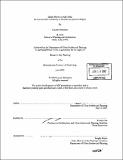| dc.contributor.advisor | Tunney Lee. | en_US |
| dc.contributor.author | Srivastava, Gaurav, 1974- | en_US |
| dc.contributor.other | Massachusetts Institute of Technology. Dept. of Urban Studies and Planning. | en_US |
| dc.coverage.spatial | a-ii--- n-us-ny | en_US |
| dc.date.accessioned | 2012-04-26T18:47:02Z | |
| dc.date.available | 2012-04-26T18:47:02Z | |
| dc.date.copyright | 2003 | en_US |
| dc.date.issued | 2003 | en_US |
| dc.identifier.uri | http://hdl.handle.net/1721.1/70367 | |
| dc.description | Thesis (M.C.P.)--Massachusetts Institute of Technology, Dept. of Urban Studies and Planning, 2003. | en_US |
| dc.description | Includes bibliographical references (p. 106-108). | en_US |
| dc.description.abstract | This is a study of how street businesses owned by immigrant Indians in London and New York City construct an identity for themselves, and then lend that to the streets on which they operate. The research is conducted at Southall, a neighbourhood in West London, and at Jackson Heights in Queens, New York City. The former served as the original receiving area for rural Sikhs migrating from Punjab in the 1950s. The latter is a twenty-year-old congregation of Indian businesses in Queens. I pose two questions. First, how have street businesses owned by Indian immigrants adapted inherited physical environments? Second, are such adaptations a deliberate attempt at asserting ethnonationalist identities, while simultaneously or independently furthering economic self-interests? My research aims to establish that in the process of earning a livelihood, immigrant Indian businesspeople construct identities and aesthetics that primarily further economic self-interests, and that these are often then mistakenly believed to be their attempts at 'establishing culture'. When the unit of analysis is the individual business, economic self interest predominates all decisions of identity. There are different sets of circumstances in which Indian immigrant businesses advertise, surrender or disguise an Indian identity. I will also establish that the differing profiles of the Indian immigrants to the US and UK explains the contrasting births and growth trajectories of the businesses in Southall and Jackson Heights. | en_US |
| dc.description.statementofresponsibility | by Gaurav Srivastava. | en_US |
| dc.format.extent | 108 p. | en_US |
| dc.language.iso | eng | en_US |
| dc.publisher | Massachusetts Institute of Technology | en_US |
| dc.rights | M.I.T. theses are protected by
copyright. They may be viewed from this source for any purpose, but
reproduction or distribution in any format is prohibited without written
permission. See provided URL for inquiries about permission. | en_US |
| dc.rights.uri | http://dspace.mit.edu/handle/1721.1/7582 | en_US |
| dc.subject | Urban Studies and Planning. | en_US |
| dc.title | Indian streets outside India : the construction of identity in Southall and Jackson Heights | en_US |
| dc.type | Thesis | en_US |
| dc.description.degree | M.C.P. | en_US |
| dc.contributor.department | Massachusetts Institute of Technology. Department of Urban Studies and Planning | |
| dc.identifier.oclc | 52988916 | en_US |
